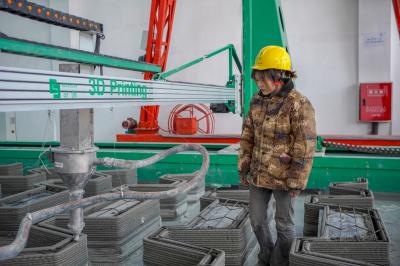|
The basic medical insurance coverage has been extended to all citizens, with the rate of participation surpassing 95 percent. By the end of 2014, the number of people subscribing to new rural cooperative medical insurance policies reached 736 million, with the rate of participation staying at 99 percent, exceeding the planned target ahead of schedule. By the end of 2014, the number of people subscribing to medical insurance for urban employees, medical insurance for urban residents and new rural cooperative medical insurance policies had exceeded 1.33 billion, an increase of over 60 million compared with that of 2010, fulfilling the planned target ahead of schedule. Per capita funding for medical insurance increased to 515 yuan in 2015, from 164 yuan in 2010, with the government grant increasing to 380 yuan for each person in 2015 from 120 yuan in 2010, exceeding the planned target. 80 percent, 70 percent and 75 percent of patients' medical treatment costs covered by urban employees' medical insurance, urban residents' medical insurance and new rural cooperative medical insurance respectively will be reimbursed. The new rural cooperative medical insurance system has generally established unified planning for outpatients to cover over 50 percent of their expenses.
Coverage of unemployment insurance, work-related injury insurance and maternity insurance continued to expand. By the end of 2015, the number of subscribers to unemployment insurance had reached 173 million, exceeding the planned target ahead of schedule. 7 provinces realized unified planning for unemployment insurance at the provincial level while all or some of the cities in 21 provinces and the Xinjiang Production and Construction Corps achieved unified planning at the city level. By the end of 2015, the number of subscribers to work-related injury insurance had reached 214 million. Unified planning for work-related injury insurance at the city level was basically in place while 10 provinces (autonomous regions, municipalities directly under the central government) issued measures for unified planning at the provincial level. By the end of 2015, the number of people subscribing to maternity insurance had reached 178 million, exceeding the planned target.
The level of social assistance has steadily improved. By the end of 2015, per capita monthly subsidies for subsistence in urban and rural areas had reached 451 yuan and 264.8 yuan respectively, an average annual increase of 10 percent. The per capita annual subsistence allowance for rural residents enjoying the "Five Guarantees" (food, clothing, medical care, housing and burial expenses) under collective care reached 6,026 yuan while the figure for those under individual care stood at 4,490 yuan, an increase of 48.4 percent and 49.3 percent respectively compared with 2012. 84.06 million people received medical assistance nationwide, with a total expenditure of 27.4 billion yuan. The one-stop settlement model was in place for medical assistance expenses in 92 percent of all areas around the country.
(4) Right to health
The conditions for health care and medical security have further improved. By the end of 2015, China had trained 173,000 general practitioners through job-transfer training, on-the-job training and standardized training, more than achieving its planned goal. The average life expectancy reached 76.34 years - higher than the planned standard. |
- Home
- News |Tibet |Exclusive |China |World |Related News |Latest
- Documents |White Papers |Others
- Photo |Politics |Economy & Society |Culture & Religion |Human & Nature |Beautiful Tibet |Other Tibetan-Inhabited Area |Exchanges |Related
- Video |News |Documentary |Micro-Video |Entertainment
- Art
- Tourism
- In Focus
- About Tibet






